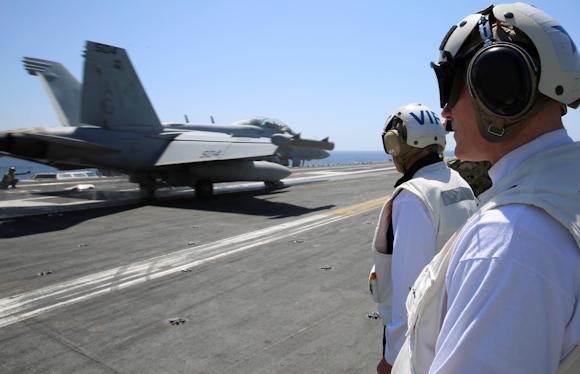International relations, with the appearance of new actors, have also contributed to changing the concept of security which, due to its scope, cannot remain relegated to the military sphere. Even the maritime strategy is not immune to changes and requires updates that, taking into account the experiences, enhance both know-how current is one capacity analytics able to provide effectively predictive medium and long term hypotheses.
Maritime power, a concept that has become more geopolitical than strategic, has means, yes traditional but currently directed towards aims aimed essentially at the protection of the SLOC1 from asymmetric threats, favored by the obligatory passages in which merchant traffic is concerned for about 90% of industrial products and commodities.
Some observers said that the end of the Cold War led to an era post naval to be considered as no longer characterized by aspects blue, oceanic, but brown, coastal; in reality the thalassocracies, as such, still use their military Marines as instruments of foreign policy; the American ambassador in Moscow, Huntsman, embarked on the CVN Lincoln (photo opening) while sailing in the Mediterranean, he was able to send a precise message to the competitors Russians simply stating that "...when you have 200 thousand tons of diplomacy crossing in the Mediterranean - which I call diplomacy, or advanced operational diplomacy - you don't need to say anything else, you have all the confidence in yourself to sit down and try to find solutions to the problems that have divided us for many, many years"; two American battle groups not far from Libya were a clear message also for Haftar, al-Sarraj, Egypt, France and also for our country, delegated by the Trump administration to manage a situation control.
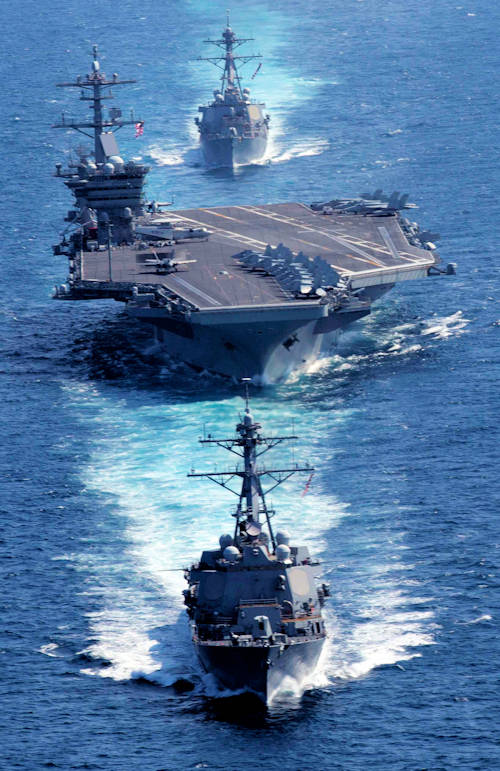 Conceptually, the Navy is therefore not only an expression of foreign policy, but also of politics and the projection of power of a State: the difficulty lies in understanding its essence, knowing how to decline it for the benefit of the Nation, an aspect that is extremely difficult to implement, precisely because of the intrinsic political nature of the exercise of force. The general prosperity, linked to the free use of maritime spaces made safe by the active presence of the Marines, inevitably requires a greater commitment of naval resources and capabilities to be guaranteed.
Conceptually, the Navy is therefore not only an expression of foreign policy, but also of politics and the projection of power of a State: the difficulty lies in understanding its essence, knowing how to decline it for the benefit of the Nation, an aspect that is extremely difficult to implement, precisely because of the intrinsic political nature of the exercise of force. The general prosperity, linked to the free use of maritime spaces made safe by the active presence of the Marines, inevitably requires a greater commitment of naval resources and capabilities to be guaranteed.
Powerful and vulnerable islands
The problem arises in terms of how a Navy should be structured, as an expression of political exercise in the broad sense. In the USA, at least for the next 30 years, the naval center of gravity will remain attested on aircraft carrier battle groups and other projection groups consisting of attack units and amphibians.
La Navy, the backbone of strategic capacity beyond horizon, and which is based on the four classic themes of deterrence, sea Control, power Projection e maritime security can boast unrivaled operational experience and technical know-how both for logistics and for the operation of a fleet based on aircraft carriers, a fundamental strategic competence in the unstable context of the 21st century where, even within NATO, it was not possible for to appreciate the reconstitution of the 2 Atlantic Fleet which, like the others, can guarantee a umbrella transoceanic with a global informational superiority. In this context, the role of battleships in the past is now interpreted by aircraft carriers, the Naval Units capable of projecting power at great distances; in Taranto, as early as November of the 1940, we have directly experienced the lethality of the English naval vehicle, which later became the icon of the deterrent US military power.
However, over time the budget problems have contributed to forming different lines of thought, oriented both to the strengthening of multi-purpose helicopter units such as the LHA class Tarawa2 or the LHD class Wasp to be placed in hot spots global, both to the development of the UAV / UCAV component3, both able to allow cost containment, but with a simultaneous reduction of the naval component. The LHAs could therefore be voted on to one power projection in an offensive context in areas characterized by asymmetric actions, with precision attack missions but on a few targets with a limited threat, and with the possibility of expressing the maximum amphibious war capacity. The operational problem, which is difficult to reconcile with the accounting reasons, therefore sets limits in relation to the objectives pursued: given the current reality it seems impossible to deprive oneself of the deterrent function of the aircraft carriers, as it does not seem appropriate to renounce imposing an air superiority that is more than ever necessary both to the implementation of the landing operations, and to the profound interdiction, operations still unsustainable by the current drones, lacking both the necessary speed and the indispensable load of war.
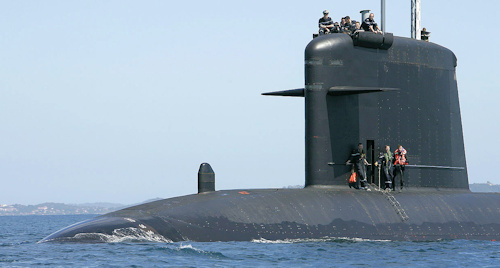 The SECNAV guidelines4 contain three terms that require the preservation of a Navy as a political expression of power: forward, engaged, ready; placing forward naval forces intend to use the sea as a maneuvering space, guaranteeing free access, defending American interests everywhere, preventing maritime routes from potential enemies, and inhibiting A2 / AD capabilities5.
The SECNAV guidelines4 contain three terms that require the preservation of a Navy as a political expression of power: forward, engaged, ready; placing forward naval forces intend to use the sea as a maneuvering space, guaranteeing free access, defending American interests everywhere, preventing maritime routes from potential enemies, and inhibiting A2 / AD capabilities5.
The US maritime power is therefore based on 11 nuclear-powered aircraft carriers protected by naval groups consisting of missile cruisers, destroyers, frigates and attack submarines, a deployment of forces justified by the value of the ships and above all by their strategic importance, but not prevented the French submarine Sapphire (photo) in the 2015, during an exercise, to score the blow that has virtually sunk the Roosevelt (7 years ago the company had succeeded in an Italian submarine... v.foto, ndd), reduced to an expensive vulnerable island. The triggered debate has not, however, left alternatives to the current American war needs, above all in anti-Chinese terms, with a sort of reissue of the Kennan doctrine in the Asian version, and which have led to the completion of the Gerald Ford, and the financing of further productions for over 81 billion USD; all this, also considering the possible use of boomers, nuclear submarines designed to deter, resist and react to any attack on national soil, results in the decision to entrust all its maritime power to 11 targets potentially exposed to swarm attacks with relatively less expensive ammunition.
Little Pacific Oceans
At the moment China seems to be the only one able to trouble the US, although its rise to maritime power is not dictated by a desire to challenge global domination, but by the need to protect national interests in geopolitically unstable theaters. Although we cannot yet speak of clear competition between the two navies, it is indisputable that Chinese growth in the last twenty years has been substantial.
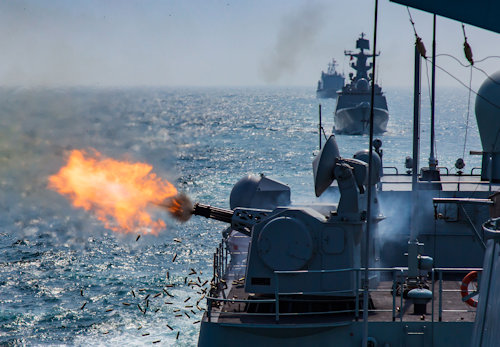
treat the continuing lack of a conflict, defined by the Daily of the EPL6 such as disease of peace, the Dragon has increased the exercises in the South China Sea, perfecting the strategy of interdiction of space and developing the asymmetric technique of both the formation of artificial islands in the Paracel and Spratly archipelagos, and the deployment of drones. The late development of the air and naval component, which essentially lies in the fact that it is not functional to the implementation of the A2 / AD, has not, however, stopped the preparations or the recruitment and training of the pilots for the new fighter embarked J-15: after Liaoning, of Ukrainian manufacture and with considerable technical limitations, has left ports of call Shandong which, although not representing a real leap in quality, has nevertheless required relatively limited construction time, in line with the Party's most urgent requests, aimed at achieving the economic objectives of the Silk Road. What is relevant is that, from the 2020, China could (optimistically) have four aircraft carriers, to aim to deploy ten within the 2049, the year indicated by Xi Jinping as that of resurgence of the nation.
Beyond the regime's oleography, the impact of the naval vehicle could, however, have a lesser relevance than expected, given that the Chinese naval units could be exposed to the firepower of both the US and the other media power resurgent, Japan, which is involved in a complex constitutional revision in which the Armed Forces would return to assume different roles from the current ones, has set up the project to transform the Hunting helicopter carrier Izumo in aircraft carriers read.
While the United Kingdom is engaged in a burdensome refitting of the brand new Queen Elizabeth, Russia remains the (maritime) tail light, near to dispose of the only (and obsolete) aircraft door unit in service, the Kuznetsov, due to strong budget shortfalls that do not seem to allow concrete projects of particular relevance, except for hypersonic missiles.
Without ifs and buts?
To speak today about aircraft carriers and embarked aviation, means to think about one of the most complete forms of power projection, together with the anti-territory and amphibious missiles, but certainly more expensive and reserved for an exclusive club. If it is true that even the small aircraft carrier (Garibaldi o Cavour) can operate effectively7, it is equally true that only the large CTOL conventional aircraft carriers8, and not STOBAR9, are the ones that can make the difference. An element that can strongly influence, also in favor of the Marines small, will be offered by the commissioning of the F-35, whose advantage over all other aircraft and in the operations of power projection it is, at the moment, immeasurable.
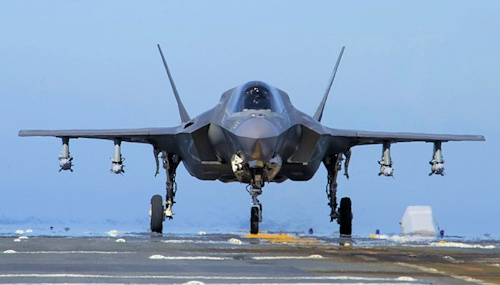 The effectiveness of naval aviation action is however limited by progress in the A2 / AD strategy; currently the US Navy is in a disadvantaged condition, given that the operating radius of its aircraft is such that it is forced to revise the available machines, or to oblige the carriers to approach the coast, or to bubble protective A2 / AD, challenging the threat of Chinese hypersonic missiles that, coming into service, fly at speeds between 5.000 and 25.000 km per hour and which, together with the UCAVs, can redefine tasks and missions of the ship coupled -aircraft; to this must be added the aspect connected to the aircraft suppliers in a more significant number and above all to defend.
The effectiveness of naval aviation action is however limited by progress in the A2 / AD strategy; currently the US Navy is in a disadvantaged condition, given that the operating radius of its aircraft is such that it is forced to revise the available machines, or to oblige the carriers to approach the coast, or to bubble protective A2 / AD, challenging the threat of Chinese hypersonic missiles that, coming into service, fly at speeds between 5.000 and 25.000 km per hour and which, together with the UCAVs, can redefine tasks and missions of the ship coupled -aircraft; to this must be added the aspect connected to the aircraft suppliers in a more significant number and above all to defend.
That naval aviation is important is beyond doubt, but that it must be accepted without ifs and buts it can be the subject of discussion, bringing the focus on how it has changed over time and on how it will change in the future, above all by accepting the principle that its development must necessarily be related to progress also in the other operating sectors.
The problem therefore returns to become political and long-term, especially as a function of the meaning attributable to a medium such as the F-35 which leads to remaining in an American orbit, and which often constitutes the parochial, obtuse, self-defeating and repeated object of the dispute between the Armed Forces.
1 Sea Lines Of Communications
2 Landing Helicopter Assault / Landing Helicopter Dock: helicopter ships with the possibility of embarking vertical take-off and landing aircraft and also equipped with a floodable dock for USMC landing craft, interested in amphibious operations
3 Unmanned aerial vehicle / Unmanned combat aerial vehicle
4 Secretary of the Navy
5 anti-access / denial area
6 People's Liberation Army
7 See the Italian participation in Enduring Freedom or in the Libyan war, when the naval aviation carried out the 50% of Italian air missions
8 Conventional landing and take-off

